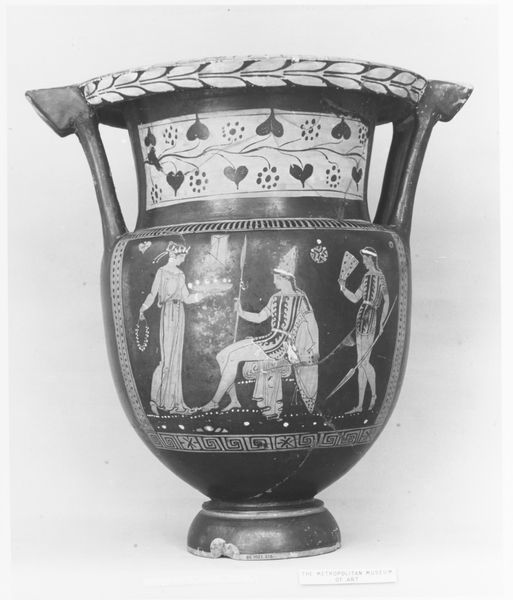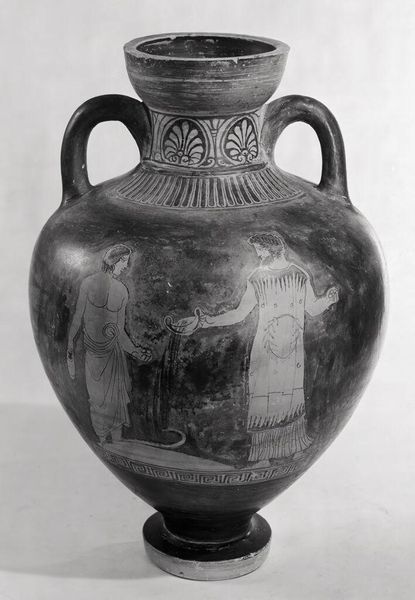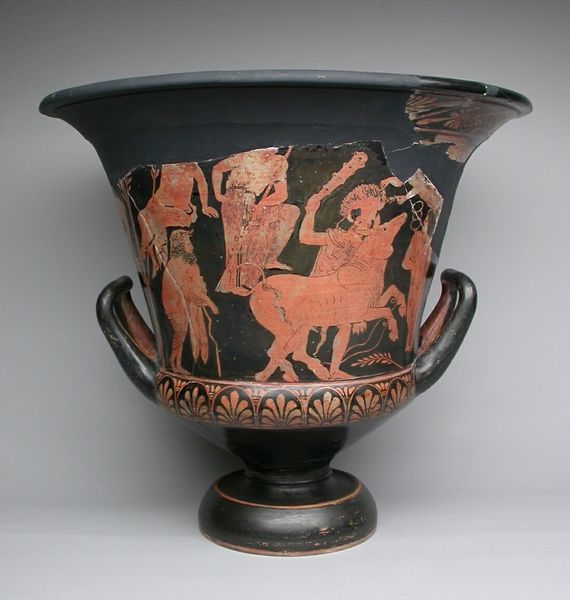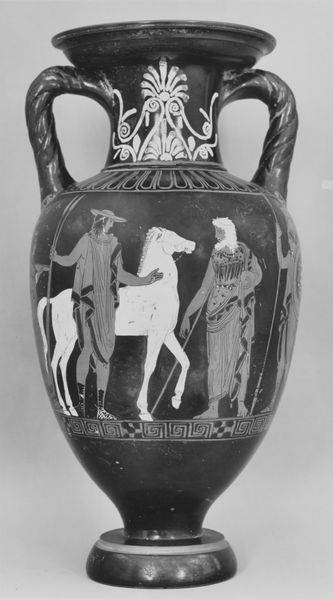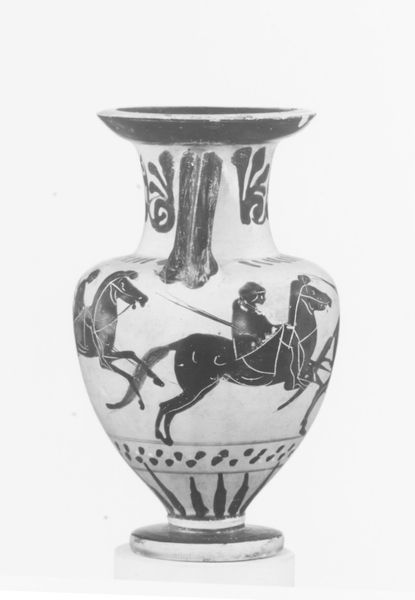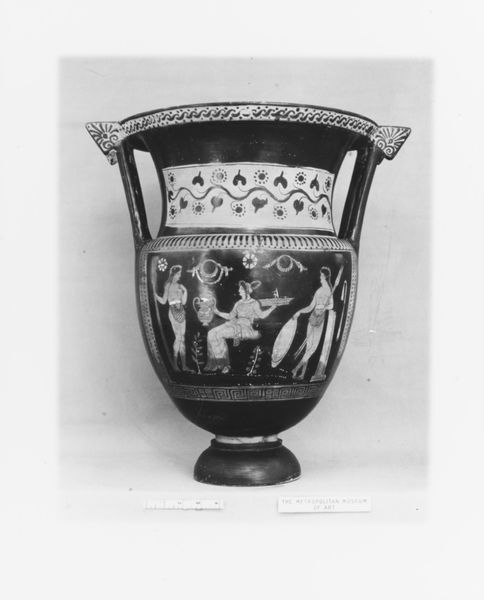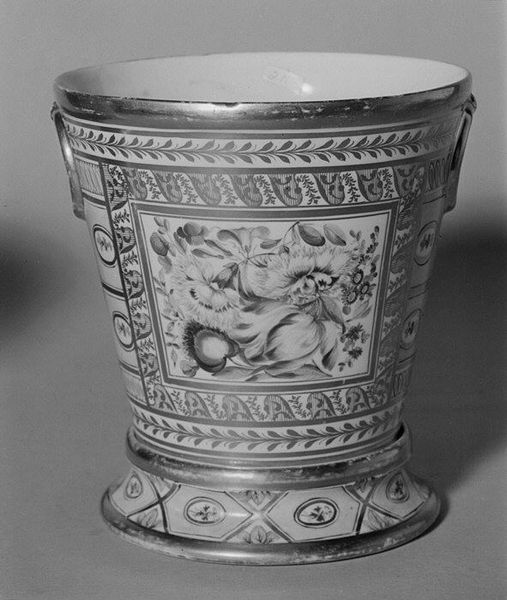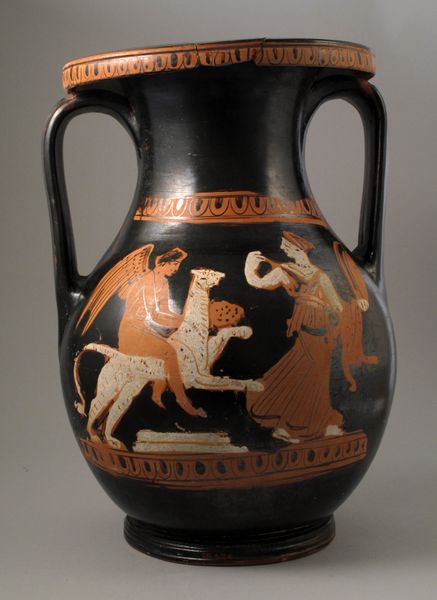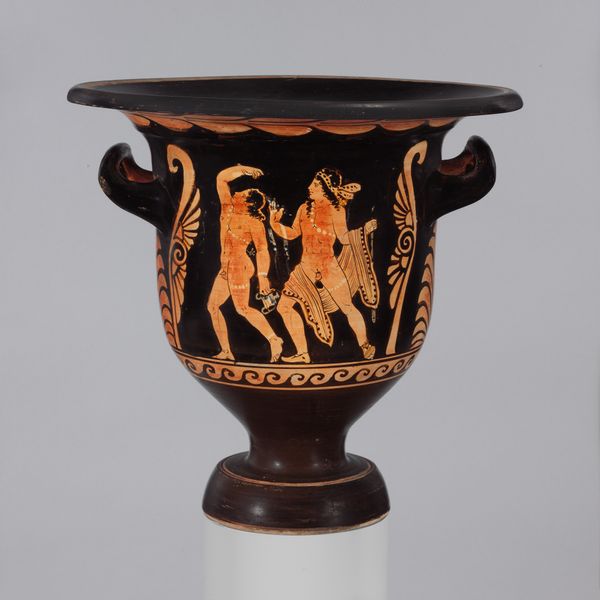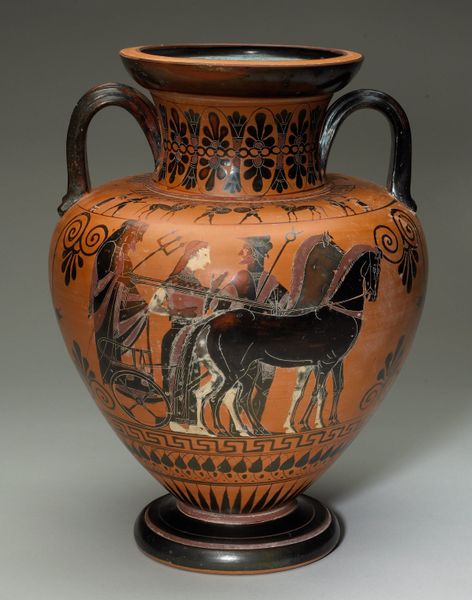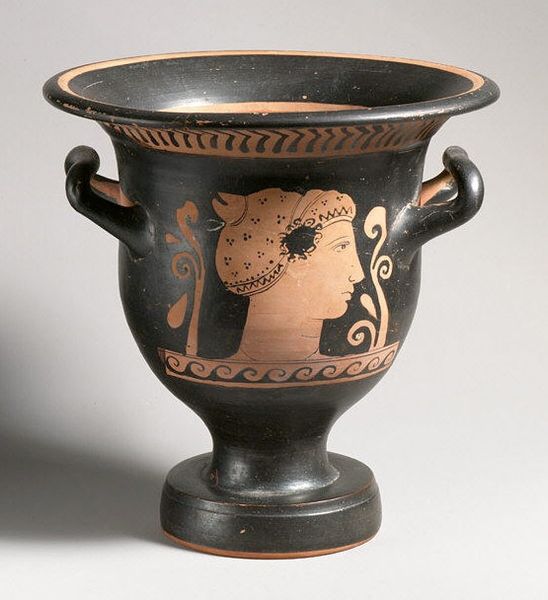
relief, ceramic
#
sculpture
#
greek-and-roman-art
#
relief
#
ceramic
#
figuration
#
ceramic
#
history-painting
Dimensions: H. with handles 17 3/16 in. (43.7 cm) H. without handles 17 in. (43.2 cm)
Copyright: Public Domain
This terracotta column-krater, or mixing bowl, was created in ancient Greece and is now housed at the Metropolitan Museum of Art. It presents us with insights into Greek culture, particularly concerning social rituals and artistic expression. The imagery on the krater, featuring figures in procession, is rich with meaning. These processions often played a vital role in religious festivals and civic events. The scenes can offer a glimpse into the social structures of ancient Greece, including class distinctions, gender roles, and religious beliefs. We can delve deeper into the iconographic significance of the depicted objects and symbols by consulting archaeological records, classical literature, and art historical scholarship. What values did they reinforce, and what social norms did they reflect? To comprehend the krater fully, we must consider the social and institutional contexts in which it was created and used. The krater's significance lies not only in its aesthetic qualities but also in its role as a cultural artifact that reflects the values and beliefs of ancient Greek society.
Comments
No comments
Be the first to comment and join the conversation on the ultimate creative platform.
